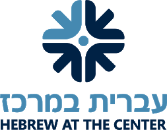A Visit to the Opal Public Charter School in Portland, Oregon
January 22, 2015 by
For all professionals – including educators and educational administrators – opportunities to step outside immediate day-to-day routines and to encounter “how others do it” can provide valuable openings for thinking meaningfully about “what is” now and “what could be” next. Two inter-twined factors combined to create just such an opening for me, in tandem with General Studies Instructional Leader Janet Collier: JPDS-NC’s abiding and deeply rooted commitment to instrumental, reflective practice and a grant from the Legacy Heritage Fund to undertake a multi-year exploration of effective, fitting applications of Reggio-inspired principles throughout our program. Drawing on some of this funding, Janet and I traveled to Portland, Oregon, for several days. While there, we visited the Opal Public Charter School and participated in a workshop sponsored by the school and its partner organizations, the Portland Children’s Museum and the Museum Center for Learning. This workshop, entitled “Extending our Image of Children: New Possibilities for Readers,” featured literacy consultant Vicki Vinton, co-author with Dorothy Barnhouse of What Readers Really Do: Teaching the Process of Meaning Making, as well as staff members from Opal and from the Museum Center.
Several salient themes from our time in Portland will continue to inform my thinking and Janet’s and that of our colleagues. Consistent with the title of Vinton’s co-authored book, What Readers Really Do, our workshop presenter emphasized the value of bringing authenticity to reading instruction, focusing lessons on how to read as effective readers actually do, rather than how to read as we sometimes artificially force children to do only for the purposes of schooling. Vinton emphasized the value of guiding students on the wonderful journey from confusion to clarity that all readers experience when they crack the pages of a book, and she offered practical suggestions on how to do just that. Consistent with these, she posed compelling questions about the risks involved in scaffolding students – providing tailored supports during the learning process – when we take it too far and thus short-circuit children’s opportunities to puzzle through and to figure things out for themselves. During our observations in Opal classrooms, we also saw lessons focused on the notion – and, more than that, on the practice – of “drawing as thinking.” Janet and I both admired the explicit ways teachers, in this context and others, named for children and then engaged them in discussions of different aspects of thinking, of functioning in a group, and of the interplay of the two: learning and thinking together.
That enterprise – learning and thinking together, with children and among adults – plays a central role at JPDS-NC as well, needless to say. Our study trip to Portland spawned incisive questions and generative ideas for both Janet and me, and we have already had opportunities to draw on these in discussions with colleagues. We look forward not just to continuing these conversations, but to extending them, drawing too from the insights that other teachers and administrators will glean from additional study trips that the Legacy Heritage grant will make possible. Most of all, we look forward to formulating and implementing enhancements to our program inspired by the collective journey of exploration and reflection we have underway.






